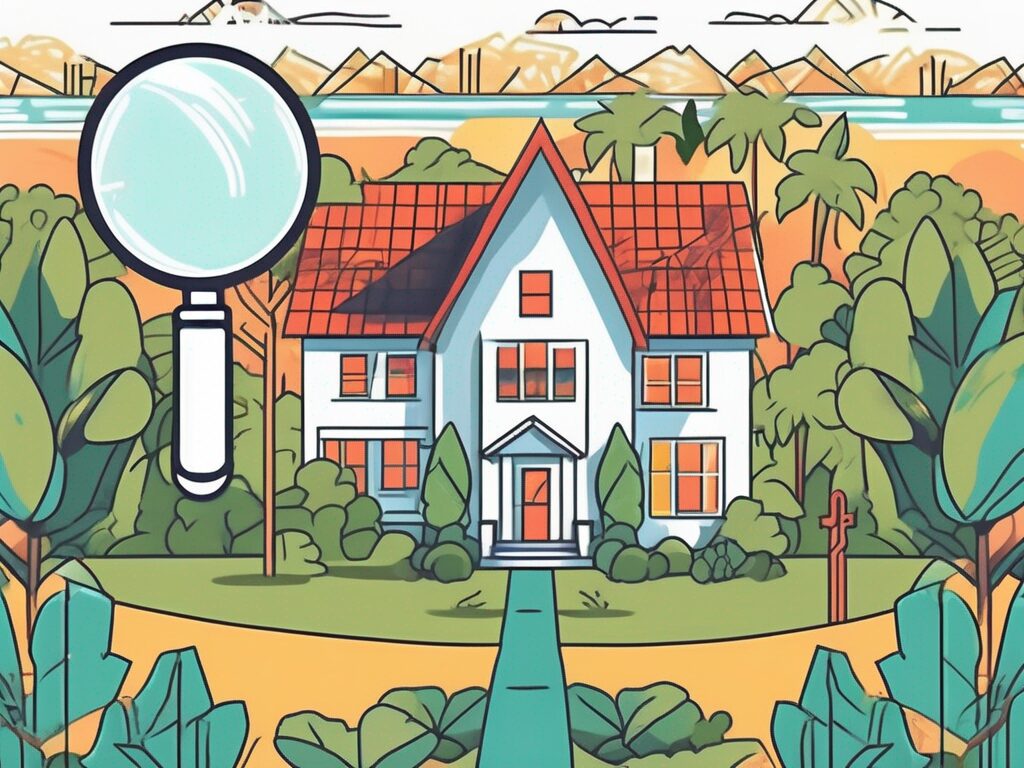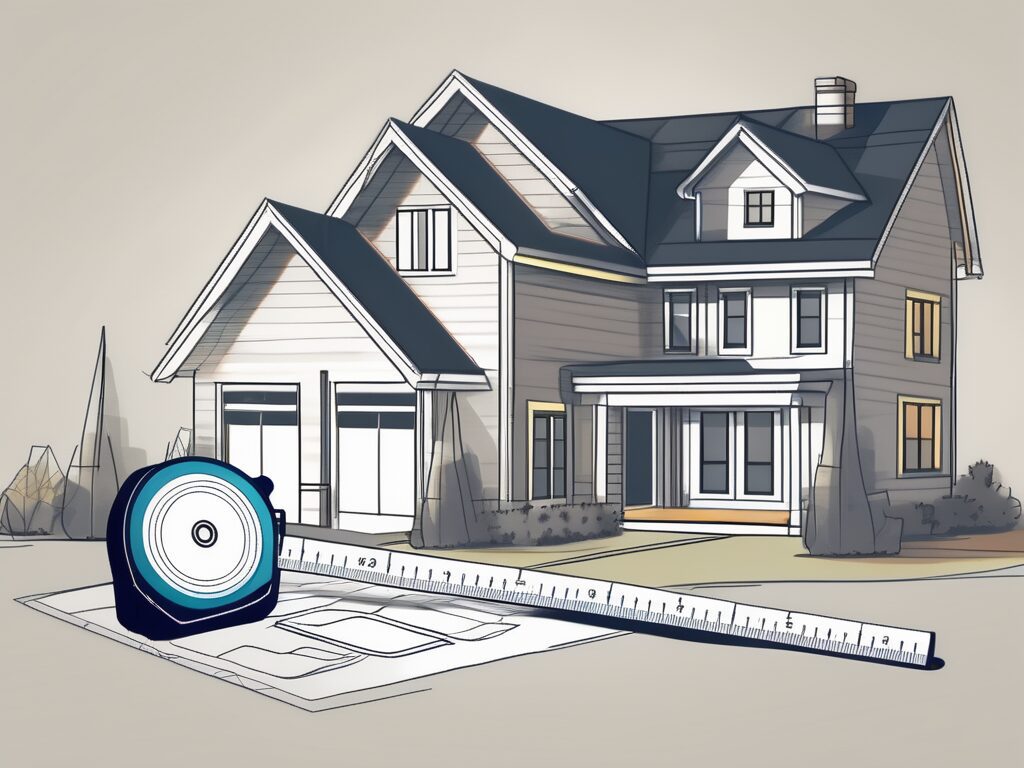
Agent A-Team or Solo Superhero? Finding the Right Real Estate Partner for Your Selling Journey in Wildwood Florida
When it comes to selling your home in Wildwood, Florida,…
January 29, 2024
If you are a homeowner or planning to buy or sell a property, understanding the square footage of a home is crucial in determining its value. In this comprehensive guide, we will explore the components of home square footage, the significance of accurate measurements, who should be responsible for the task, a DIY guide for measuring your home, the impact of square footage on home value, and expert insights on maximizing your home’s square footage.
When it comes to measuring a home, it is essential to have a clear understanding of what is included in its square footage. The square footage of a home typically comprises the finished areas above grade, including all livable spaces such as bedrooms, bathrooms, kitchens, living rooms, and dining rooms. It also includes any enclosed areas like sunrooms or patios that are heated and cooled throughout the year.
However, it is important to note that certain areas are not included in the square footage calculation. These may include unfinished spaces such as basements, garages, and attics, as well as outdoor areas like porches, decks, and driveways.
When it comes to bedrooms, they are an essential component of a home’s square footage. Bedrooms provide the necessary space for rest and relaxation, and they come in various sizes and configurations. From cozy single bedrooms to spacious master suites, each bedroom adds to the overall square footage of a home.
Bathrooms are another significant component of a home’s square footage. They are essential for personal hygiene and can range from simple powder rooms to luxurious spa-like retreats. The number and size of bathrooms in a home contribute to its overall square footage.
Kitchens, often considered the heart of a home, also play a crucial role in determining its square footage. A well-designed kitchen can enhance the functionality and appeal of a home. From compact kitchens in apartments to gourmet chef’s kitchens in large houses, the size and layout of the kitchen impact the overall square footage.
Living rooms and dining rooms are spaces where families and friends gather to relax and share meals. These areas add to the square footage of a home and provide ample space for entertaining guests and creating lasting memories.
Sunrooms or enclosed patios are additional spaces that can be included in a home’s square footage. These areas provide a connection to the outdoors while still being protected from the elements. They can be used as additional living spaces, home offices, or even indoor gardens.
When measuring a home’s square footage, the following areas are typically included:
These areas, when combined, provide a comprehensive measurement of a home’s livable space.
There are a few common misconceptions that homeowners and buyers should be aware of regarding home square footage. One of the most common misconceptions is that a larger home will always have a higher value. While square footage plays a significant role in determining a home’s value, other factors such as location, amenities, and condition also come into play. It is essential to consider these variables when assessing the value of a property.
Another misconception is that all areas of the home can be included in the square footage calculation. As mentioned earlier, unfinished spaces like basements, garages, and attics, as well as outdoor areas, are typically excluded from the square footage measurement. These spaces serve different purposes and are not considered part of the primary livable areas of a home.
Understanding the components of home square footage is crucial for both homeowners and buyers. It allows for a more accurate assessment of a property’s size and value, helping individuals make informed decisions when it comes to buying or selling a home.
Accurate square footage measurement is crucial in several aspects of homeownership, including home pricing and appraisals. Understanding the importance of accurate measurements will help homeowners make informed decisions regarding their property.
Accurate square footage not only provides homeowners with a clear understanding of the size of their property, but it also plays a significant role in determining the value of their home. When listing a property for sale, providing accurate square footage details can attract potential buyers and help them compare your home to similar properties in the market. Buyers often have specific square footage requirements, and having accurate information readily available can streamline the buying process and increase the likelihood of selling your home at the desired price.
Furthermore, accurate square footage measurements are essential during the home appraisal process. When a homeowner decides to refinance their mortgage or apply for a home equity loan, an appraisal is typically required. During the appraisal, the appraiser considers various factors, including square footage, to determine the fair market value of a property. Accurate square footage measurements can significantly influence the appraiser’s evaluation and ultimately affect the final appraisal value. Providing accurate square footage details to the appraiser can help ensure a fair and accurate assessment of your property.
Accurate square footage measurements also play a crucial role in property tax assessments. Local governments use square footage data to calculate property taxes, and inaccurate measurements can result in overpaying or underpaying taxes. By providing accurate square footage information to the tax assessor, homeowners can ensure that their property taxes are calculated correctly, saving them from unnecessary financial burdens.
Moreover, accurate square footage measurements can impact a homeowner’s insurance coverage. Insurance companies often use square footage data to determine the replacement cost of a home in case of damage or loss. If the square footage is underestimated, homeowners may not have enough coverage to rebuild their home fully. On the other hand, overestimating the square footage can lead to higher insurance premiums. By providing accurate square footage details to insurance companies, homeowners can ensure that they have adequate coverage at a fair price.
Accurate square footage measurements are also essential for homeowners who plan to make renovations or additions to their property. Knowing the exact square footage can help homeowners plan and budget for their projects more effectively. It allows them to determine the amount of materials needed, estimate labor costs, and ensure that the changes comply with local building codes and regulations.
In conclusion, accurate square footage measurements have a significant impact on various aspects of homeownership. From determining the price of a home to influencing appraisals, property tax assessments, insurance coverage, and renovation plans, accurate square footage details are essential for making informed decisions and ensuring fair evaluations. Homeowners should prioritize obtaining accurate measurements to maximize the value and potential of their property.
The question of who should be responsible for measuring a home’s square footage often arises. Homeowners have two primary options: hiring professionals or opting for a DIY approach.
When it comes to measuring the square footage of a home, accuracy is key. The size of a home can greatly impact its value, so it’s important to get it right. But who should be entrusted with this task?
If you want to ensure accurate measurements and avoid potential errors, hiring professionals is the recommended option. Appraisers, architects, or licensed measurement professionals have the expertise and tools required to measure a home accurately. They follow standardized measurement guidelines and take into account any local regulations or guidelines that may apply. Hiring professionals can provide peace of mind and eliminate the risk of inaccuracies that could impact the value of your home.
On the other hand, some homeowners may prefer to take matters into their own hands and measure their homes themselves. This DIY approach can save money, but it comes with its own set of challenges. DIY measurements may not carry the same weight as measurements taken by professionals during appraisals or transactions involving lenders. It’s important to be aware of this potential discrepancy and consider the implications.
If you choose to hire a professional to measure your home, it is crucial to select the right expert. Consider their qualifications, experience, and track record. Look for professionals who have expertise in measuring residential properties and are familiar with local regulations and guidelines. Additionally, it is recommended to obtain multiple quotes and compare the services provided to ensure you make an informed decision.
When it comes to measuring the square footage of your home, accuracy is of utmost importance. Whether you choose to hire professionals or take the DIY route, make sure to carefully consider the implications and potential consequences. A well-measured home can provide a solid foundation for future transactions and ensure that you are getting the most accurate value for your property.
If you decide to measure your home yourself, following a step-by-step approach can help ensure accuracy. Keep in mind that this method may not provide the same level of accuracy as professional measurements, but it can give you a general idea of your home’s square footage.
When measuring your home’s square footage, it is essential to avoid common mistakes that could lead to inaccurate measurements. Some of the most common mistakes include:
Accurate measurements are crucial when determining your home’s square footage. By following the step-by-step instructions provided, you can ensure that you obtain a reliable estimate. However, it’s important to note that this DIY method may not be as precise as professional measurements.
Creating a floor plan is the first step in the process. This plan will serve as a visual representation of your home’s layout, allowing you to measure each room accurately. Use a measuring tape to determine the length and width of each room, ensuring that you measure from wall to wall.
Once you have obtained the measurements for each room, you can calculate the square footage. Multiply the length and width of each room to obtain the area in square feet. For example, if a room measures 10 feet in length and 12 feet in width, the square footage would be 120 square feet.
Irregularly shaped rooms can pose a challenge when calculating square footage. To overcome this, break down the room into smaller rectangular sections. Measure each section individually and calculate its square footage. Add the square footage of each section together to obtain the total square footage of the room.
While measuring the livable areas of your home, it’s important not to overlook non-livable spaces such as staircases, hallways, or closets. These areas should be measured separately and subtracted from the total square footage. By doing so, you can obtain a more accurate representation of your home’s actual livable space.
When measuring, it’s crucial to avoid common mistakes that can lead to inaccurate results. Ensure that you measure the entire room, including any alcoves or recessed areas. Additionally, be mindful of unfinished spaces such as basements or attics, as they should not be included in the calculation of your home’s square footage.
Using accurate and consistent measurements is vital to obtaining reliable results. Double-check your measurements to ensure their accuracy and consistency throughout the process. Inaccurate measurements can significantly impact the final square footage calculation.
Lastly, don’t forget to subtract the square footage of non-livable areas such as staircases or hallways. These areas are not considered part of the livable space and should be excluded from the total square footage calculation.
By following these step-by-step instructions and avoiding common mistakes, you can confidently measure your home’s square footage. Remember, while this DIY method can provide a general idea of your home’s size, professional measurements may be necessary for more precise calculations.
The square footage of a home has a direct impact on its value. Understanding how square footage influences home sale price and maximizing the value through optimization is crucial for homeowners.
When it comes to buying or selling a home, square footage plays a significant role in determining its market value. Generally, larger homes command higher sale prices due to the increased livable space they offer. A larger home means more rooms, more storage space, and potentially more amenities, all of which can be attractive to potential buyers.
However, it’s important to note that the exact impact of square footage on home sale price varies depending on several factors. Location is one such factor. In highly desirable areas where space is limited, the value of each square foot tends to be higher. On the other hand, in areas where land is more abundant, the impact of square footage on price may be less significant.
Market conditions also play a role in determining the influence of square footage on home value. In a seller’s market, where demand exceeds supply, buyers may be willing to pay a premium for larger homes. Conversely, in a buyer’s market, where supply exceeds demand, the impact of square footage on price may be less pronounced.
Buyer preferences also come into play. Some buyers prioritize spaciousness and are willing to pay more for larger homes, while others may prioritize location or specific features and amenities. It’s important to consider these factors when evaluating your home’s value and setting an appropriate sale price.
If you are looking to maximize your home’s value, effective utilization of your home’s square footage is key. There are several strategies you can employ to optimize your home’s square footage and increase its appeal to potential buyers.
Consider making strategic modifications and improvements to enhance the functionality and appeal of your living spaces. This may include converting unfinished areas into livable spaces, such as finishing a basement or renovating an attic. By transforming underutilized areas into usable living spaces, you can increase the overall square footage of your home and potentially attract buyers who are looking for that extra space.
In addition to physical modifications, decluttering and organizing your home can make it appear more spacious and appealing to potential buyers. Remove any unnecessary items and furniture to create a sense of openness and allow buyers to envision themselves living in the space. Consider investing in storage solutions to maximize the use of available space and create a tidy and organized environment.
Furthermore, consider the layout and flow of your home. Open floor plans are often desirable as they create a sense of spaciousness and allow for flexible use of space. If possible, remove any unnecessary walls or barriers that may impede the flow of natural light and make the space feel cramped.
Lastly, pay attention to the exterior of your home. Curb appeal is crucial in attracting potential buyers. Enhance the landscaping, update the façade, and create an inviting entrance to make a positive first impression. Outdoor living spaces, such as a well-designed patio or deck, can also add value by extending the usable square footage of the home.
In conclusion, the square footage of a home directly impacts its value. Understanding how square footage influences home sale price and employing strategies to optimize the use of space can help homeowners maximize their home’s value and attract potential buyers.
Real estate professionals offer valuable insights and tips for maximizing your home’s square footage. Their industry expertise can shed light on innovative space utilization techniques.
Real estate professionals recommend utilizing various creative techniques to maximize your home’s square footage:
By implementing these expert insights, you can optimize your home’s square footage and enhance its value.
Understanding the square footage of your home is essential for determining its value and making informed decisions about buying or selling. By exploring the components of home square footage, the significance of accurate measurement, and expert insights on maximizing your space, you will be well-equipped to navigate the complexities of home valuation. Whether you choose to hire a professional or measure your home yourself, remember that accurate measurements are crucial for an accurate assessment of your property’s worth.

If you want the Richr team to help you save thousands on your home just book a call.
 Book a call
Book a call